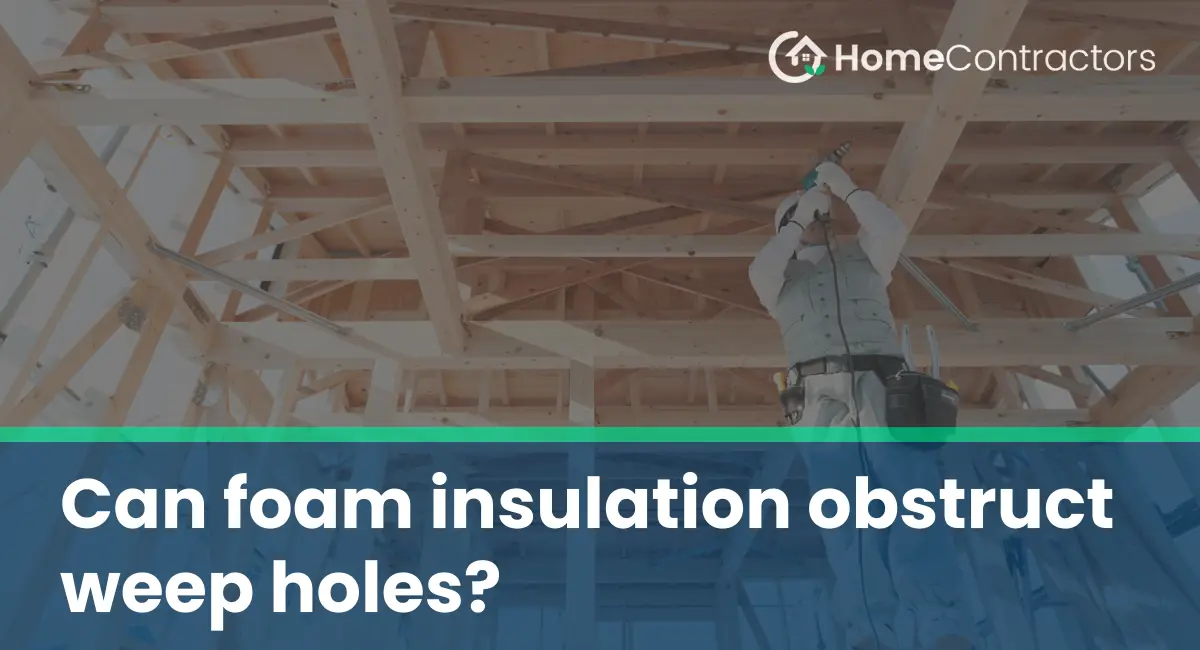Introduction to Weep Holes and Foam Insulation
Weep holes are small openings located near the bottom of exterior walls or window sills. Their purpose is to allow any moisture that may have entered the wall cavity to escape, preventing potential water damage and deterioration. On the other hand, foam insulation is a popular and effective way to improve the energy efficiency of a building by creating an air barrier and preventing heat transfer. However, there is a concern that foam insulation may obstruct weep holes, compromising their functionality. In this article, we will explore this issue in detail and provide insights into whether foam insulation can obstruct weep holes.
Understanding Weep Holes
Weep holes are typically small, rectangular or circular openings left open during the construction of exterior walls or window installations. These openings are vital because they allow water, condensation, and moisture to escape from the wall cavity, preventing potential damage to the structure. By providing a pathway for any trapped moisture to drain, weep holes reduce the likelihood of mold growth, wood rot, and other forms of structural damage caused by excessive moisture.
Benefits of Foam Insulation
Foam insulation, such as spray polyurethane foam (SPF) or rigid foam boards, has gained popularity in recent years due to its exceptional insulation properties. Foam insulation forms an airtight barrier that prevents air leakage, reduces energy consumption, and improves indoor comfort. By sealing gaps, cracks, and other areas of infiltration, foam insulation helps maintain stable temperature levels throughout the building, enhances energy efficiency, and reduces utility costs. However, it is crucial to ensure that foam insulation does not obstruct weep holes in the process.
Potential Obstruction of Weep Holes
Proper installation of foam insulation is essential to avoid obstructing weep holes. If foam is improperly applied, it could unintentionally cover or fill the weep holes, preventing the escape of moisture. This can result in water accumulation inside the wall cavity, leading to mold growth, wood rot, and a weakened structure over time. If weep holes are obstructed, the overall effectiveness of the building’s drainage system can be compromised, potentially leading to water damage and other costly issues.
Preventing Obstruction
To prevent obstruction of weep holes when using foam insulation, the following measures should be taken:
- Awareness and Planning: During the planning stage, make sure to account for the presence of weep holes and their positioning. This awareness will help determine the appropriate installation technique while taking necessary precautions.
- Careful Application: Foam insulation should be applied while being mindful of the weep hole locations. For example, when using spray foam, installers should pay attention to where the foam is being sprayed and take caution not to cover the weep holes.
- Proper Sizing: Ensuring that the weep holes are adequately sized can also help reduce the chance of obstruction. Larger weep holes are less likely to be covered or overwhelmed by foam insulation during application.
- Regular Inspection and Maintenance: After the foam insulation is installed, regular inspection and maintenance are crucial. Building owners or maintenance personnel should periodically examine the weep holes to confirm their functionality and clear any potential obstructions.
While foam insulation is an excellent method for enhancing energy efficiency, it is essential to consider its potential impact on weep holes. Proper planning, careful installation, and regular inspections are key to ensuring that foam insulation does not obstruct these vital drainage openings. By taking the necessary precautions, building owners can enjoy the benefits of foam insulation while maintaining the integrity and functionality of weep holes in their exterior walls and window installations.
